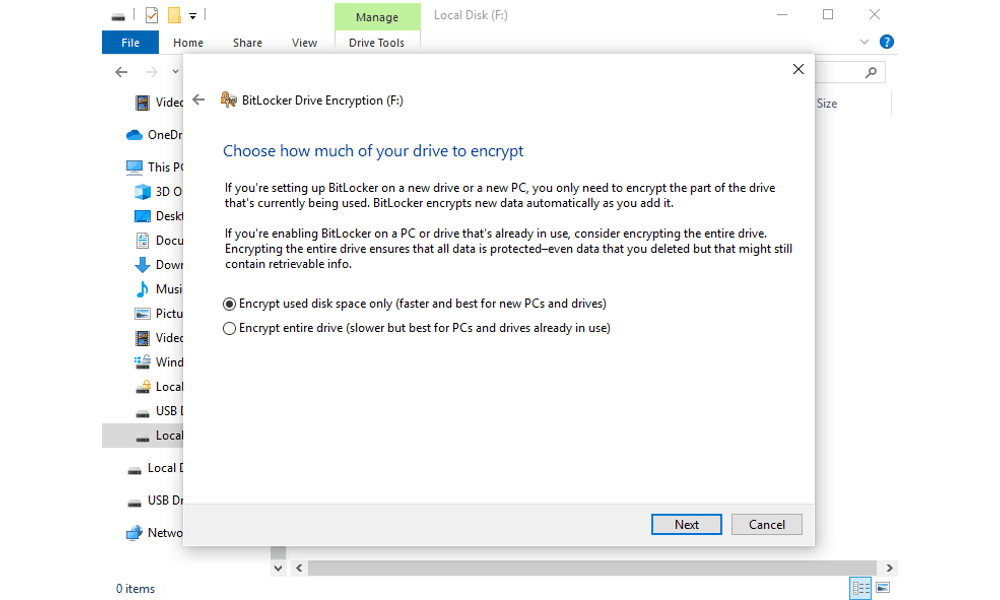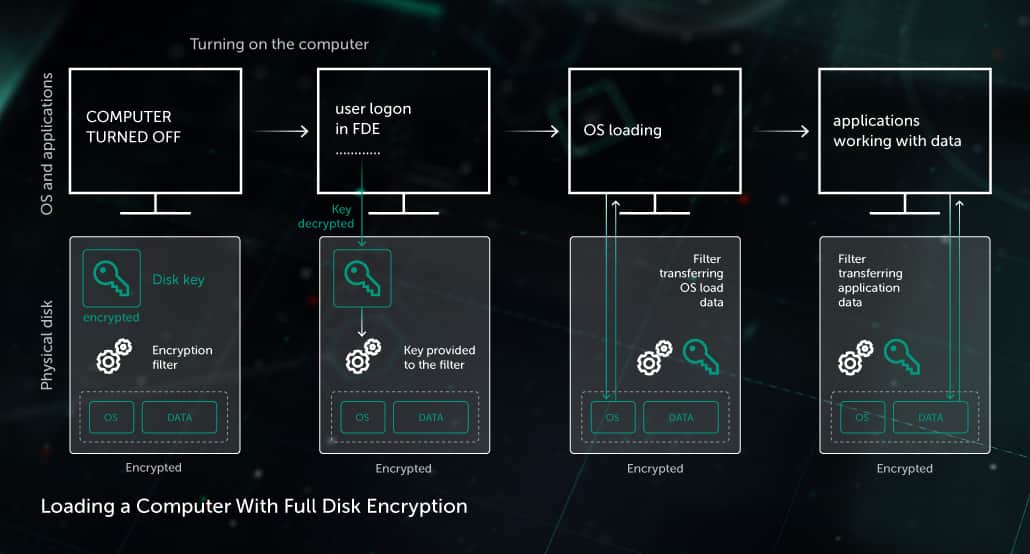
- #DESCRIBE HARD DISK DRIVE ENCRYPTION. FULL#
- #DESCRIBE HARD DISK DRIVE ENCRYPTION. RAR#
- #DESCRIBE HARD DISK DRIVE ENCRYPTION. SOFTWARE#
- #DESCRIBE HARD DISK DRIVE ENCRYPTION. WINDOWS 7#
In general there's some pattern or another. It turns out that this high quality of randomness isn't particularly common in a hard drive's normal lifecycle. While you can't tell for certain, you can tell within a certain range of confidence.Įncrypted data looks like white noise: each bit has exactly a 50% probability of being set, regardless of the rest of the bits there is no correlation between any given bit and any of the others. In a normal case where user isn't trying to fool us, it is somehow easy to tell encryption is in place but in real world scenarios where user's may try to hide things and deceive us they may just pipe /dev/urandom to a file! It's not gonna be easy. So going back to the main question, " Is it that easy to tell?", this falls under forensics methods, we may be dealing with steganography techniques.
#DESCRIBE HARD DISK DRIVE ENCRYPTION. RAR#
gzip, rar and zip) have known signatures we can differentiate them from encryption for the most part. (No jpg, no office documents, no known file types) And since compression methods (e.g. One other pointer to detect encryption is that no known file signature will be spotted in the volume. We can extend this further and draw plots to visualize the distribution of bytes. The closer the entropy value is to 8.0, the higher the entropy. To do this we can use a Python script named file_entropy.py.

One other method is to measure the randomness of files and the closer they are to random, the more certain we are that encryption is used. Methods discussed earlier may not be feasible for every disk/file encryption scheme since not all of them have specific properties that we can exploit to detect them. Measuring File Randomness To Detect Encryption Hex value " 53 47 4D 34 30 30 3A"Īt sector offset 3 MBR, the product identifier " ëH|PGPGUARD" can be found.
#DESCRIBE HARD DISK DRIVE ENCRYPTION. FULL#
Note that since there's no specific signature or header left behind we can't tell for sure if TrueCrypt (or its siblings) were used, by combination of several methods we can try to make better guess about its presence.įilevault is Bitlocker's equivalent on Mac and offers full disk encryption.

For both DiskCryptor and TrueCrypt we can detect their presence with the following criteria: These volumes can also be identified by a GUID: The signature of " -FVE-FS-" can be found at the beginning of bitlocker encrypted volumes. A disk encrypted by bitlocker is different than a normal NTFS disk.
#DESCRIBE HARD DISK DRIVE ENCRYPTION. WINDOWS 7#
I'm going to take a list of popular tools and standards and see if they leave any traces with which we can determine that they've been used:īitlocker is a full disk encryption standard available on windows operating system from Windows 7 onwards this tool uses AES256 to encrypt the disk. EnCase) that help us detect the schemes and programs used to encrypt the disk.
#DESCRIBE HARD DISK DRIVE ENCRYPTION. SOFTWARE#
There are documented forensics methods and software (e.g.

We have two types of encryption here, "file based encryption" and "full disk encryption".


 0 kommentar(er)
0 kommentar(er)
